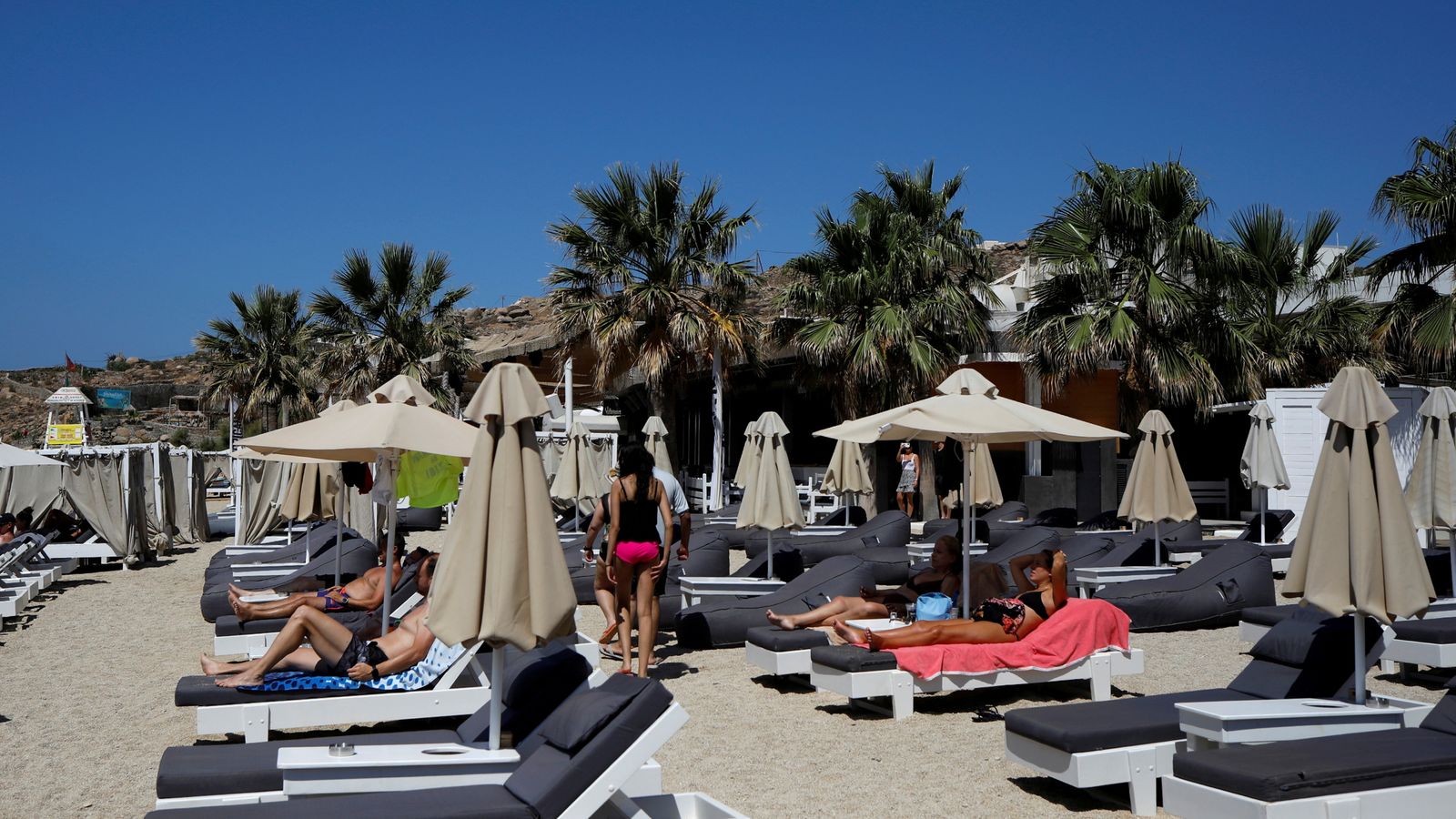The most popular Greek tourist destinations have been marked “dark red” on the European Centre for Disease Prevention and Control’s COVID-19 map.
The change came as a result of a rise in coronavirus infections in the cluster of 13 south Aegean islands, which include Mykonos, Santorini and Rhodes – that typically attract millions of people every summer.
It means all but essential travel to and from the Greek region is discouraged.
Greece had been relying on promising “COVID-free” islands to draw visitors back this summer in the hopes of resuscitating its vital tourism industry after its worst year in decades in 2020.
Despite a strong number of arrivals in June, uncertainty remains over how the season will unfold.
“We’re waiting to see how the (tourist) markets will react,” said Manolis Markopoulos, president of the hoteliers association of Rhodes, where more than 90% of tourists are from abroad.
Greece was forced to impose a week-long curfew and music ban on its party island Mykonos after infections surged earlier this month.
In June, the Bank of Greece said it would take two to three years for travel and spending to return to the record levels of 2019, when Greece saw over 33 million tourists and €18bn (£15bn) in revenues. It forecast this year’s revenues would be 40% those of 2019.
Germany and Britain are the biggest sources of visitors to Greece.
Greece and its islands are on the UK’s amber list, meaning those arriving from the country must have had both doses of a coronavirus jab to avoid the requirement to self-isolate for 10 days.
Please use Chrome browser for a more accessible video player
The dark red zones on the ECDC map help distinguish very high-risk areas and also helps EU member states uphold rules requiring testing on departure and quarantine upon return.
Last week it downgraded Crete, Greece’s biggest island and another popular destination, to the dark red zone.






















